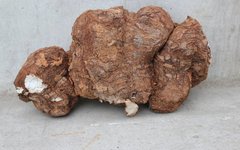
— Issue 101 —
Poria (Fuling)
PORIA
Alias
Fu Ling, Fuling, Song Yu, Fu Tu, Song Mu Shu
Source
This product is the dried sclerotium of the fungus Poria cocos (Schw.) Wolf, belonging to the family Polyporaceae. It is harvested from July to September. After excavation, the soil and sand are removed, and it is piled up to “sweat” before being spread out to dry until the surface is dry. This process is repeated several times until wrinkles form and most of the internal moisture is lost, then it is air-dried, referred to as “Fu Ling Ge”; or fresh Poria is cut into different parts and air-dried, referred to as “Fu Ling Pian” (Poria slices) and “Fu Ling Kuai” (Poria blocks).
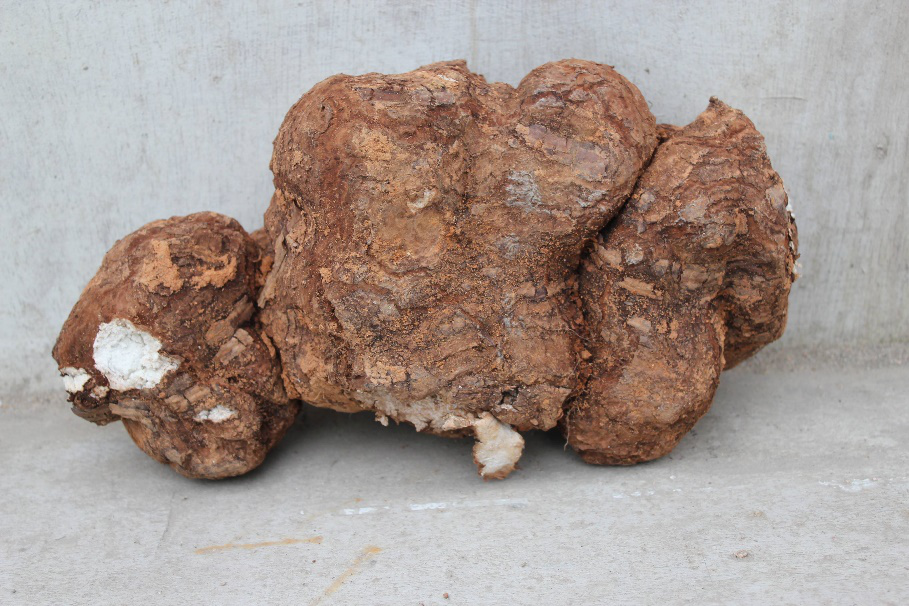
Habitat Distribution
Poria grows parasitically on the roots of pine family plants such as red pine or masson pine, penetrating 20 to 30 cm underground. It is mainly produced in Anhui, Hubei, Henan, and Yunnan. Additionally, it is also found in Guizhou, Sichuan, Guangxi, Fujian, Hunan, Zhejiang, and Hebei, with the best quality produced in Yunnan and larger quantities in Anhui and Hubei.
Identification of Characteristics
Fu Ling Ge is spherical, oval, flat, or irregular in shape, varying in size. The outer skin is thin and rough, brown to dark brown, with distinct wrinkled textures. It is heavy, solid, and has a granular fracture surface, some with cracks, the outer layer being light brown, the interior white or slightly red, with some containing pine roots. It has a faint odor, a bland taste, and is sticky when chewed.
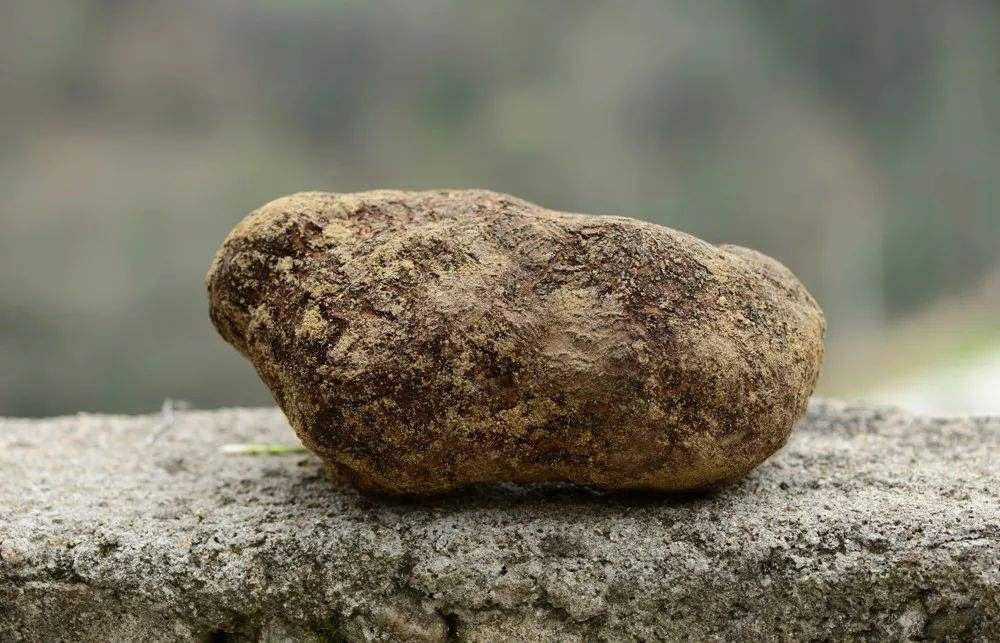
Fu Ling Kuai is the peeled and cut Poria, shaped into cubic blocks or thick slices, varying in size. It is white, light red, or light brown.
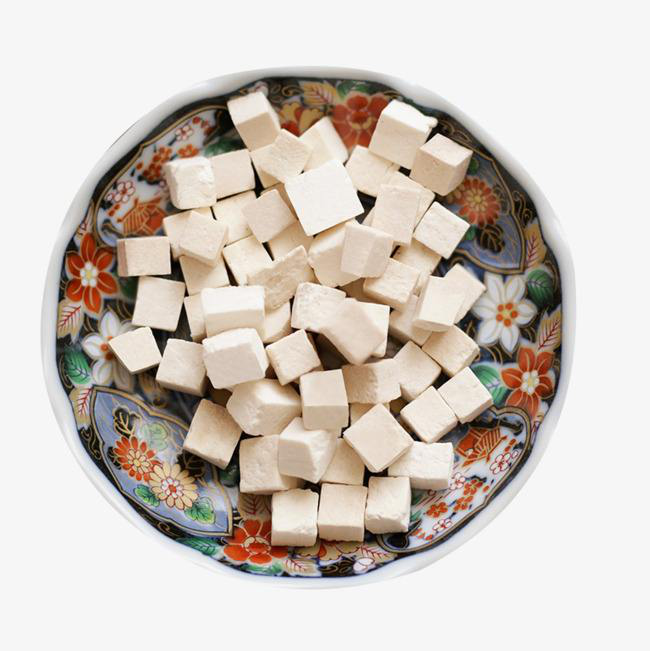
Fu Ling Pian is the peeled and cut Poria, shaped into irregular thick slices, varying in thickness. It is white, light red, or light brown.
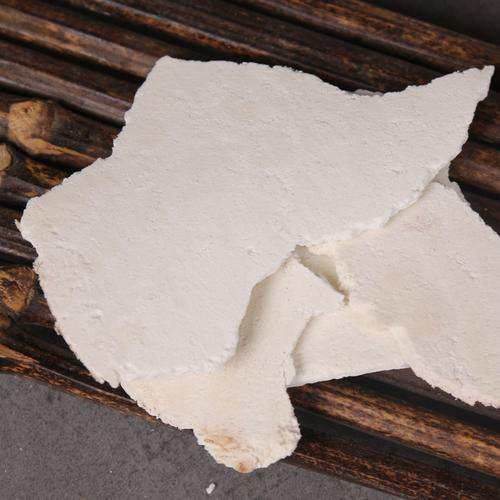
Identification of Authenticity
Counterfeit products: Artificial products made from talcum powder, starch, and gypsum pressed into small blocks. They are white and have a solid texture.
Main distinguishing points from authentic products:
1. Taste: If it does not stick to the teeth, it is a counterfeit.
2. Soaking in water: If it disperses after half an hour, it is a counterfeit.
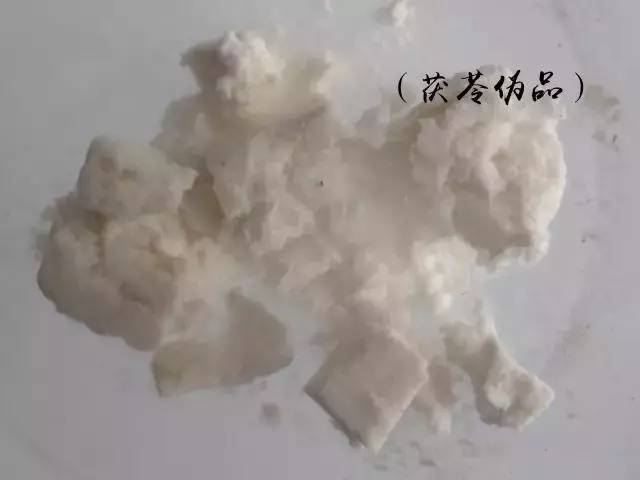
3. Scratching with a nail: If no dust falls off, it is authentic; counterfeit products will shed dust when scratched.
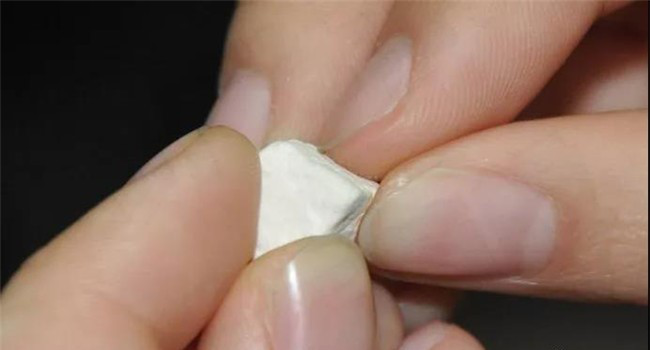
Authentic Poria
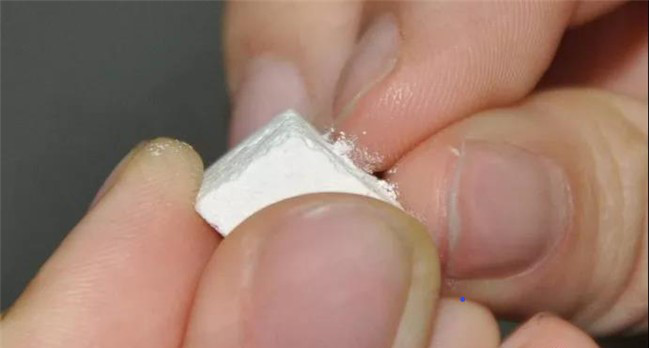
Counterfeit Poria
4. Iodine test with potassium iodide solution: Authentic products show a deep red color, while counterfeits turn blue-purple or blue-black.
5. Microscopic examination: Authentic products have mycelium.

Interesting Facts about the Herb
The Tang dynasty writer Liu Zongyuan recorded in “Collected Works of Liu Zongyuan” that once he fell ill with abdominal distension and palpitations. A doctor advised him to use Poria for cooking. He bought Poria and cooked it, but his condition worsened. When he consulted the doctor again, the doctor said he had bought taro, not Poria. He then wrote the “Discrimination of Fu Shen” to warn the public.
Clinical Applications
Poria is sweet, bland, and neutral. It enters the Heart, Lung, Spleen, and Kidney meridians. It has the effects of promoting urination and leaching out dampness, strengthening the Spleen, and calming the mind. It is used for edema, reduced urination, phlegm-dampness causing dizziness, Spleen deficiency with poor appetite, diarrhea, and restlessness with palpitations and insomnia.
1. Edema: For edema due to internal retention of dampness and difficulty in urination, it is often used with Zhu Ling (Polyporus), Ze Xie (Alisma), and Bai Zhu (Atractylodes) in formulas like Wu Ling San (Five-Ingredient Powder) from “Treatise on Febrile Diseases”. For edema due to water-heat accumulation and Yin deficiency with difficulty in urination, it is often combined with Hua Shi (Talc), E Jiao (Donkey-hide Gelatin), and Ze Xie in formulas like Zhu Ling Tang (Polyporus Decoction) from “Treatise on Febrile Diseases”. For edema due to Spleen and Kidney Yang deficiency, it is often used with Fu Zi (Aconite) and Bai Zhu in formulas like Zhen Wu Tang (True Warrior Decoction) from “Treatise on Febrile Diseases”.
2. Spleen deficiency diarrhea: For diarrhea due to Spleen deficiency with excessive dampness, characterized by poor appetite and fatigue, it is often used with Bai Zhu, Shan Yao (Chinese Yam), and Yi Yi Ren (Job’s Tears) in formulas like Shen Ling Bai Zhu San (Ginseng and Atractylodes Powder) from “Formulas of the Bureau of Harmonization”.
3. Phlegm-damp syndrome: For cough with excessive white phlegm due to Spleen’s failure to transport, it is often used with Ban Xia (Pinellia) and Chen Pi (Tangerine Peel) in formulas like Er Chen Tang (Two-Cured Decoction) from “Formulas of the Bureau of Harmonization”. For symptoms of chest fullness, dizziness, palpitations, and shortness of breath due to insufficient Middle Yang and phlegm retention, it is often combined with Gui Zhi (Cinnamon Twig), Bai Zhu, and Gan Cao (Licorice) in formulas like Ling Gui Zhu Gan Tang (Poria, Cinnamon, Atractylodes, and Licorice Decoction) from “Essentials of Prescriptions from the Golden Cabinet”.
4. Palpitations and insomnia: For palpitations and forgetfulness due to deficiency of both Heart and Spleen, characterized by insufficient Qi and blood, it is often used with Ren Shen (Ginseng), Dang Gui (Angelica), and Suan Zao Ren (Sour Jujube Seed) in formulas like Gui Pi Tang (Restore the Spleen Decoction) from “Jisheng Fang”. For restlessness, palpitations, forgetfulness, and insomnia due to disharmony between Heart and Kidney, it can be used with Dang Shen (Codonopsis), Yuan Zhi (Polygala), and Shi Chang Pu (Acorus) in formulas like Ning Shen Ding Zhi Wan (Calm the Spirit and Settle the Will Pill) from “National Standard”.
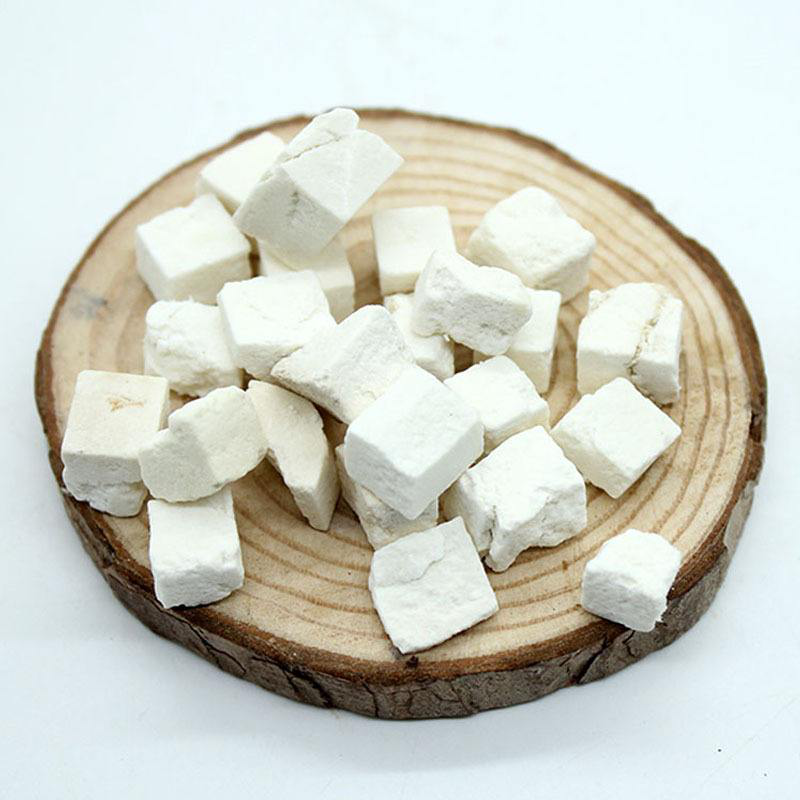
Modern Applications
1. Wu Ling San (Five-Ingredient Powder)
It has the effects of warming Yang, transforming Qi, promoting dampness, and facilitating water metabolism. It is used for edema caused by Yang not transforming Qi, with symptoms of difficulty in urination, abdominal swelling, vomiting, diarrhea, and thirst without desire to drink.
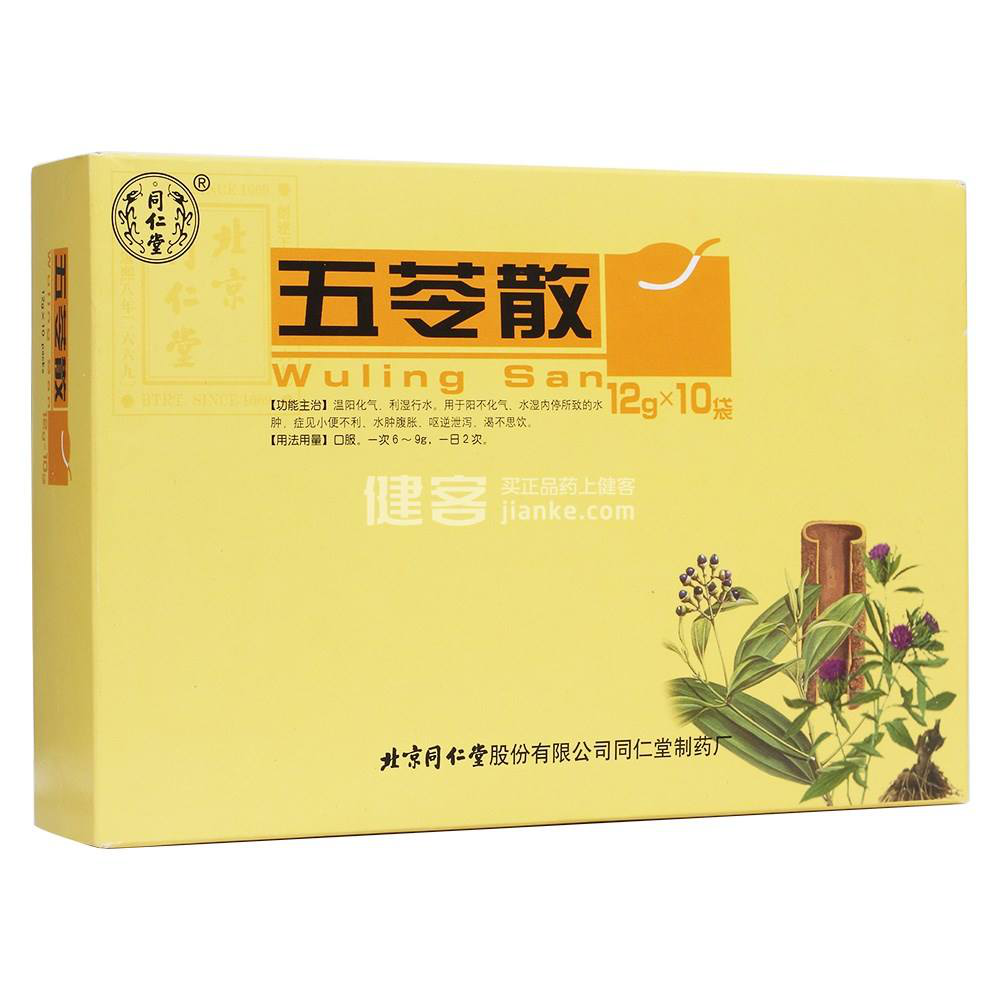
2. Si Jun Zi Granules (Four Gentlemen Granules)
It has the effect of benefiting Qi and strengthening the Spleen. It is used for Spleen and Stomach Qi deficiency, with poor appetite and loose stools.
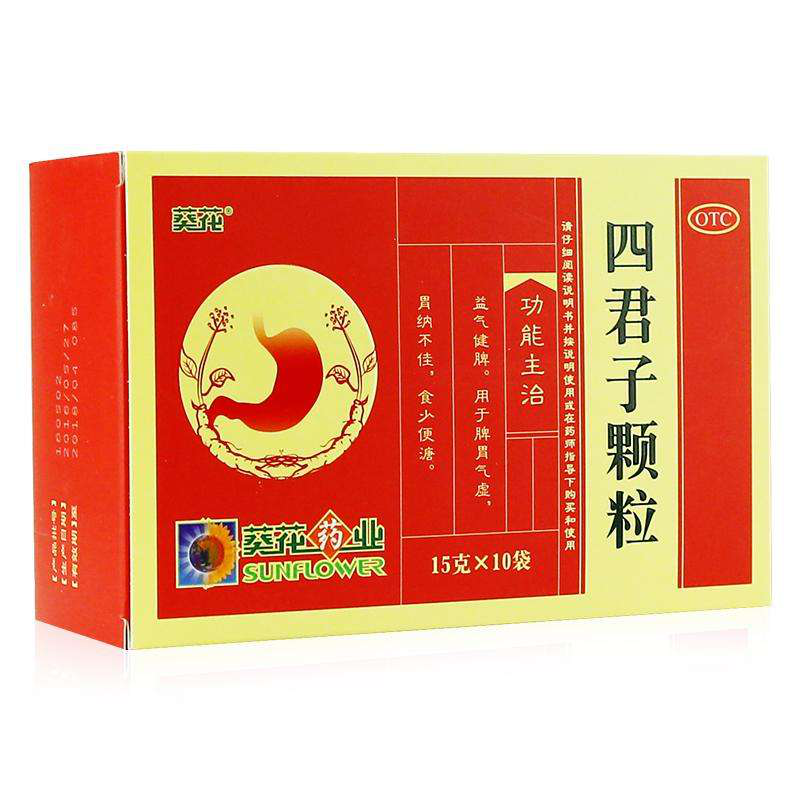
3. Qian Shi Fu Ling Zhou (Fox Nut and Poria Congee)
Qian Shi (Euryale) 15g, Fu Ling (Poria) 10g, and an appropriate amount of rice. Crush the Qian Shi and Fu Ling, add an appropriate amount of water, and boil until soft, then add washed rice and continue to cook until it becomes congee. It can tonify the Spleen and benefit Qi. It is suitable for difficulty in urination, cloudy urine, impotence, and premature ejaculation.
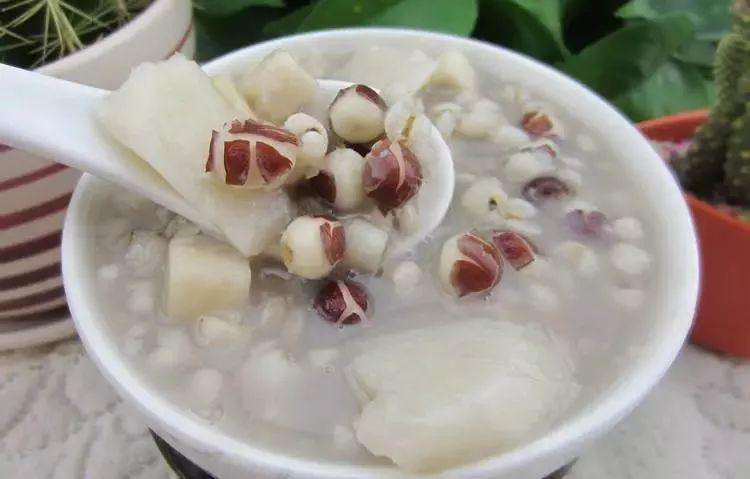


See you next time

Source / School of Pharmacy
Text / Qin Zizhen
Layout / Liang Yu
Review / Li Shasha


(Issue 139, Total Issue 1187)

